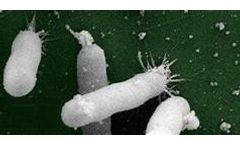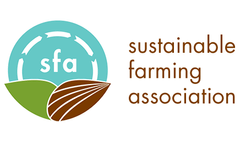Host Plant Articles & Analysis
24 news found
However, at a watershed scale, the changes of soil fungal communities under afforestation could not only be influenced by host plant and soil environment, but also by spatial distance. How to distinguish the sources of the influences is particularly important. ...
Xylella Fastidiosa and Huanglongbing attack the xylem of the host plant by creating a biofilm that limit the movement of water and nutrients in the host. ...
This event is sponsored by the Mower County Historical Society; seed garlic will be available to purchase from Paul Schmidt, Sunfresh Food. Finally, SFA will host a Garlic Planting Field Day on Sat., Oct. 13, at both the U. of ...
Richburg Plant Manager, William Gist, commented, company leadership places a priority on our understanding of where and how PLT® is used. “Plant employees have visited customer farms to see where the product they make is used. ...
Biodiversity To restore the natural resilience in agricultural systems, we can use classical techniques such as crop rotation, mixed cropping or flowering field margins with host plants for useful insects. This enables us to restore biodiversity not only spatially (mixed cropping, field margins), but also temporally (crop rotation). ...
Microscopic manipulators When crop plants were provided with growth-promoting rhizobacteria – microbes that colonise roots – the yields of vegetables and grain increased by 20% to 45% in a drought, compared with well-watered plants. ...
Our dealer conference and demo days were a great success with the launch of the exciting, new Compact Plant range. The event, which was well attended by the majority of our European dealers, began at the Glenavon Hotel, Cookstown on Wednesday, with presentations from the sales and marketing team highlighting key details of the compact plant. The afternoon and subsequent days consisted of ...
Kiverco’s dealer conference and demo days were a great success with the launch of the exciting, new Compact Plant range. The event, which was well attended by the majority of Kiverco’s European dealers, began at the Glenavon Hotel, Cookstown on Wednesday, with presentations from the sales and marketing team highlighting key details of the compact plant. The afternoon and subsequent ...
” Added Dr. Mathias Twizeyimana, plant pathologist at AgBiome, “We are delighted to work with the Gates Foundation on this important project, which aims to direct AgBiome’s deep expertise in biological disease control toward helping farmers in the poorest ...
Biological control is an attractive solution, generally affording low- or no-exposure risk and potentially offering season-long control through inoculation of host plants. The project will be led by AgBiome entomologists, Drs. ...
Scientists describe how the comparative analyses of 18 new fungal genomes allowed them to track the evolution of symbiotic fungi interacting with trees, heath plants and orchids. The results help understand how plants and fungi developed symbiotic relationships, and how the mutualistic association provides host plants with ...
The females make one or more nests per season, usually directly under the squash plants from which they forage." Splawski said that squash bees are highly sensitive to insecticide applications and tillage because they locate their nests in squash fields and have no noncrop host plants in most of their range. ...
Viruses of the Caulimoviridae family are at the root of many plant infections. Like all of their kind, they are strictly intracellular parasites, meaning they must interact very closely with their host in order to develop. ...
Disease-causing bacteria resulting from livestock farming can contaminate food products and find their way to humans. This occurs remarkably effectively via plants, which explains why recent outbreaks due to infection with EHEC and other E. coli and Salmonella strains are regularly attributed to the consumption of fresh vegetables. These are the findings of researchers from Wageningen UR ...
For this reason we are looking for plants that are better at supporting Orius. We started with fifteen plant species, but several species were discarded because they proved to be excellent host plants for thrips. ...
Both pathogens present a risk to the EU citrus industry because host plants are present in Europe and the environmental conditions are favourable. ...
A large-scale research and development project has shown that giving farmers resources and advice on nitrogen fixation through legume plants can double yields and boost incomes in Africa. But not all farmers are benefiting from this practice due to a lack of access to inputs, such as fertilisers says Ken Giller, the leader of the N2Africa project, as a second phase to widen ...
Rhizobia bacteria establish a mutually beneficial relationship with their host plant in which they exchange nitrogen they fix for nutrients plants produce through photosynthesis, and could be integral to improving the quality and nitrogen content of soil. The discoveries could pave the way to improving the production of leguminous ...
"The gene encodes a protein which removes the sodium [salt] from the cells lining the xylem, which are the 'pipes' [the] plants use to move water from their roots to their leaves," contributing author, Matthew Gilliham, from the University of Adelaide's Waite Research Institute, told SciDev.Net. "The study proves a concept that salinity tolerance can be improved in cereals and ...
In a major breakthrough that helps us better understand how viruses cause diseases in plants – and potentially in animals and humans – Dr Ming-Bo Wang and Neil Smith of CSIRO Plant Industry have revealed a genetic mechanism that enables viral organisms to infect hosts and cause diseases. ...











